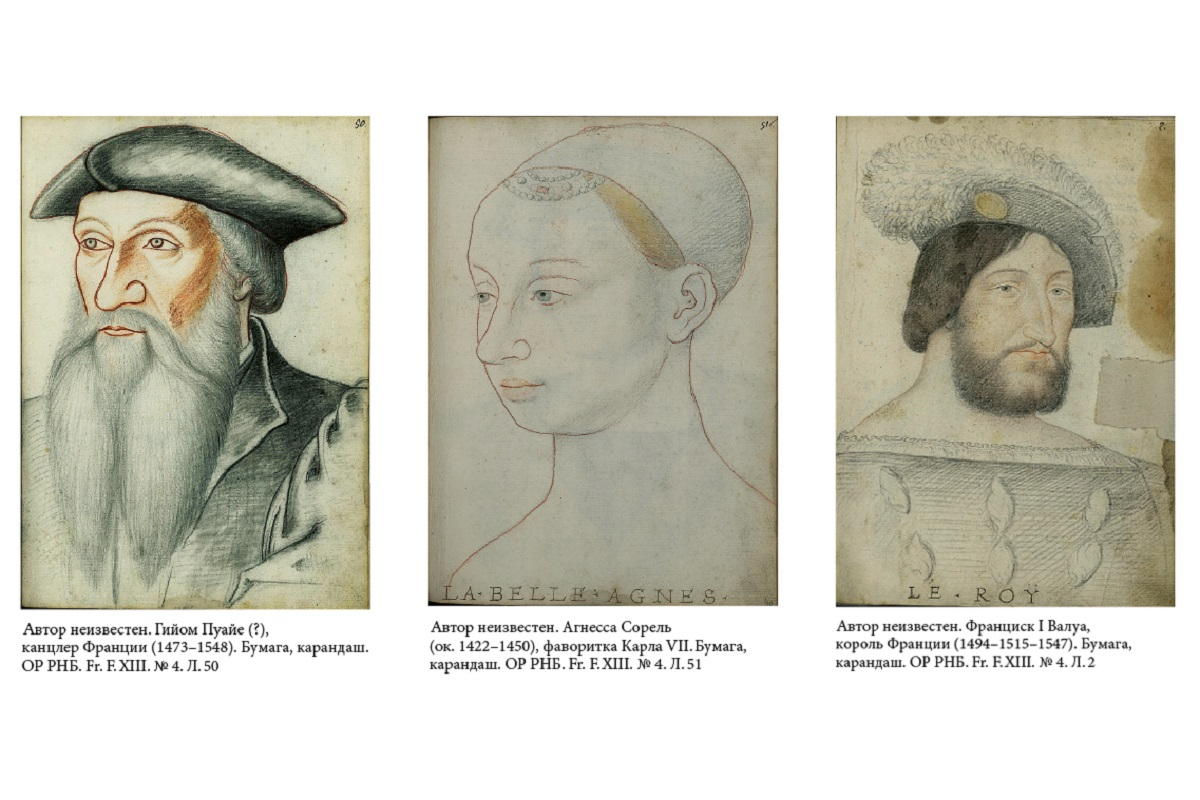Who is depicted on the French Renaissance portraits?

The historians of St Petersburg University have studied an album that features pencil portraits of the members of the royal court during the reign of Francis I and revealed who they depict. The scientists have been trying to identify who is depicted in the portraits since the 19th century, yet they have failed so far.
The Russian National Library (RNL) keeps the European manuscripts and autographs dated the 15th-18th centuries, including those written in the French language. The album with the pencil drawings that are in the limelight of our historians came to Russia from the Abbey of Saint-Germain d'Auxerre that is a main state book archive of Pre-Revolutionary France. The manuscripts were delivered by a completest, secretary-translator of the Russian Embassy Petr Dubrovski.
There are 40 books of this kind that were created in different centuries and depict the members of several French royal court that were approved for one year and then should be changed. These valuable manuscripts are kept in the archives, museums, and libraries all over the world. Three of them are in St Petersburg.
The album with 39 portraits of the members of the royal court was created in the 16th century and published in many copies. The pencil drawings are attributed to the artists of the school of Jean Clouet.
The French court in the Renaissance imitated the Classical antiquity. Many classical public figures wanted to stamp their own mark on the history: they ordered their portraits for posterity.
SPbU Associate Professor and Candidate of History Vladimir Shishkin
The album features the portraits of the members of the royal court. In the 19th century, the arts historians studied the album, yet they failed to identify who was depicted in the drawings.
Let us remind that during the St Petersburg International legal Forum-2018 SPbU and University Paris-Sorbonne signed an agreement on collaboration to develop and implement joint educational programmes in history, literature and philosophy. The agreement was signed by SPbU Rector Nikolay Kropachev and President of the Fund of the University Paris-Sorbonne Barthélémy Jobert.
“The French names in the Middle Ages were written in different ways, and it is hard nut to crack to identify who is depicted in the portraits. The pre-revolutionary arts historians couldn’t decipher the names under the portraits”, — said Vladimir Shishkin.
The historians have identified all portraits. The most difficult portrait to identify was a portrait of an old man with no signature. After studying his attire, the historians assumed that he must be French Chancellor Guillaume Poyet.
Another interesting fact is that each portrait was created by several artists, as SPbU aspirantura student Ksenia Soshnikova has revealed after the codicological analysis of the portraits.
“We seldom see people smiling on the Middle Ages portraits. Yet the manuscript album is different. The portraits in the album are very lively: they depict young healthy people aged 20-25 who won’t resist the temptations of Neo-Platonism”, — said Vladimir Shishkin.

